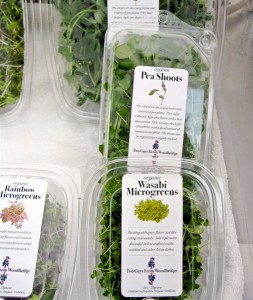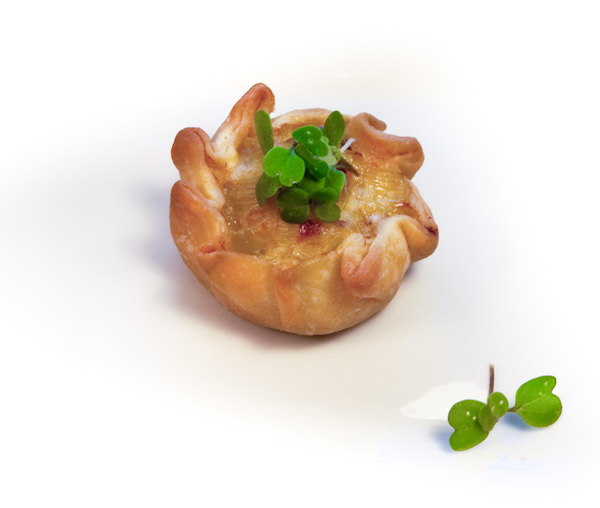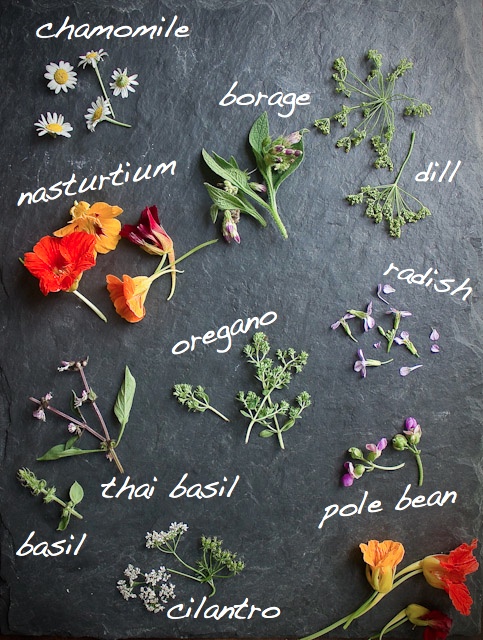 These weeks the gardens are bursting with flowers. Not the flower gardens, but the herb and vegetable gardens. Some of the flowers I planned on (nasturtiums and chamomile), some are part of the journey (pole bean blossoms which will become bean pods), and some are a result of me not harvesting fast enough and a bit of the plant going to seed (cilantro, basil, dill, oregano, and radish). I'm a big proponent of using as much of a plant or vegetable as I can. One of my favorite "tip to toe" recipes doing this is Chef Bill Telepan's Beet Greens Pierogi with Mixed Summer Beets and Brown Butter Sauce. I also got much too excited when I learned in a master class in culinary school, with chef Michael Anthony of NYC's Gramercy Tavern, that I could pickle the technicolored chard stems I had been pushing aside and composting for years. It is equally exciting for me to use flowers in dishes. As mentioned, some are planned, some are not, but there is a lot of flavor, and a ton of color and texture there that would otherwise go to waste. They are not just a pretty face--and frequently fetch a premium price at the markets. Certainly make sure you know what you are serving and eating, so as not to go all Arsenic and Old Lace on unsuspecting BBQ guests. But there are so many varieties of edibles around right now, and just a small edition of a few feels very very special. Cleaning and Storage Try to pick the flowers as close to use as possible. Store them, unwashed, wrapped gently in paper towel in the refrigerator, protected in a bowl or open container. Teeny tiny bugs love to hide out in their petals and folds, so examine each blossom carefully. To wash, and to refresh flowers that are a little droopy, plunge the entire blossom in a bowl of cold water for about five minutes, and then allow to dry on a paper towel. After washing, flowers can be floated. right side up, in a bowl of cold water until ready to go onto the plate. Ideas for Use - Salads! Whole or torn, little bursts of blossom color are a magnificent addition to salads. Nasturtiums in particular, leaves and flowers, with a wonderful peppery zing, are a great addition. But also think about the flowers of complimentary herbs like dill, basil, cilantro, and chervil. Then consider adding some of the same herb to the dressing to tie it all together. - Garnish soups by floating a single blossom in the middle of the bowl. This is particularly effective with cold soups, as it won't wilt the flower. Try it with Borage, a beautiful purple flower with a taste very similar to fresh cucumber. - Decorate cakes, cupcakes and pastry with a blossom here and there. Edible flowers definitely each have their own flavor, so stick with the sweeter and more floral plants for this, like chamomile, lavender, and mint. - Tear up some petals and sprinkle them over a plate or platter like confetti right before serving. Or make a tiny micro salad of flowers to top a piece of grilled fish or meat.  A quick snapshot from lunch--Buttermilk with Fuji Apple Dashi, Market Herbs and Flowers, and Pine Nuts at Momofuku Ssäm Bar, NYC. | ||||||||||||||||
Here's a great little dish using those irresistable watermelon radishes and microgreens now growing at a farmers' market near you. Ready in under a half hour, this would be a deceptively easy, super impressive first course for a local-chic dinner soiree. Or triple the scallops, and pair it with cool buckwheat soba noodles dressed with sesame vinaigrette and sprinkled with additional microgreens for a light and springy main course. Either way it uses some of the best items our farmers are offering up at this moment. And after months and months of braised root vegetables, some very welcome fresh leafy crunchy variety.
[caption id="attachment_2004" align="aligncenter" width="600"] 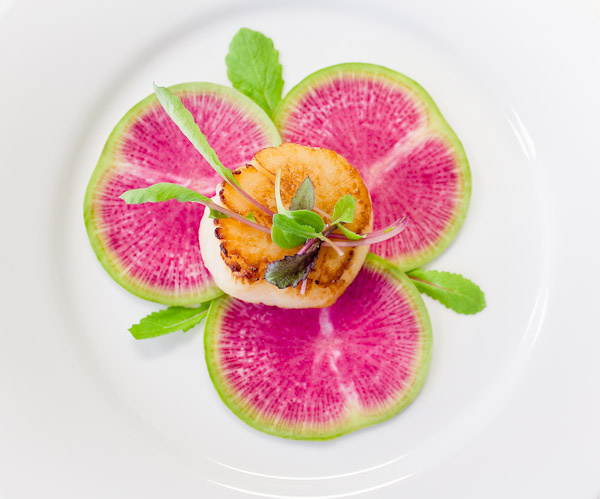 http://www.pitchforkdiaries.com/2011/03/25/pan-seared-sea…crogreen-salad/[/caption] http://www.pitchforkdiaries.com/2011/03/25/pan-seared-sea…crogreen-salad/[/caption] | ||||||||||||||||||||||
 Micro Mesclun from Windfall Farms, Union Square Greenmarket, NYC. Spring is here, and the farmers' market offerings are slowly transitioning from squash, root vegetables, and cold storage foods to fresh spring produce in the weeks ahead. One of the first fresh spring finds to look for are microgreens.
Arugula, lettuces, beets, radish, and kale are very commonly used for microgreens, but cilantro, basil and wasabi are available for a really exciting addition. They are used frequently as a fancy-schmancy garnish in restaurants, offering great color and texture, in addition to a burst of flavor on the top of a dish. But use them at home for a delicate little salad, to top off a piece of grilled seafood, or anywhere you want to add a small bit of freshness without overpowering a recipe with large greens leaves. They are thin and delicate, so are perfectly tender just eaten raw. Keep an eye out for them at the market, or grow your own in some seed flats in your window until the weather gets a little warmer, and then set aside a micro-patch of garden for the rest of the season. Ready in just over a week, I've planned ahead for dinner parties, planting seeds a week or so prior, and snipping fancy-schmancy garnishes of my own hours before my guests arrive. Impressive? Yes. Easy? Yes. Flavorful, healthy, and fun on plate? Yes, yes and more yes. Gruyere and leek tartlette with homegrown arugula microgreens. | ||||||||||||||||
Though apples are excellent long-keepers, and will be around for months at the markets, they never taste better to me than right now--sun still warm in the sky, "transition" jacket getting pulled out of the closet, leaves crunching beneath my feet, and halloween fast approaching.
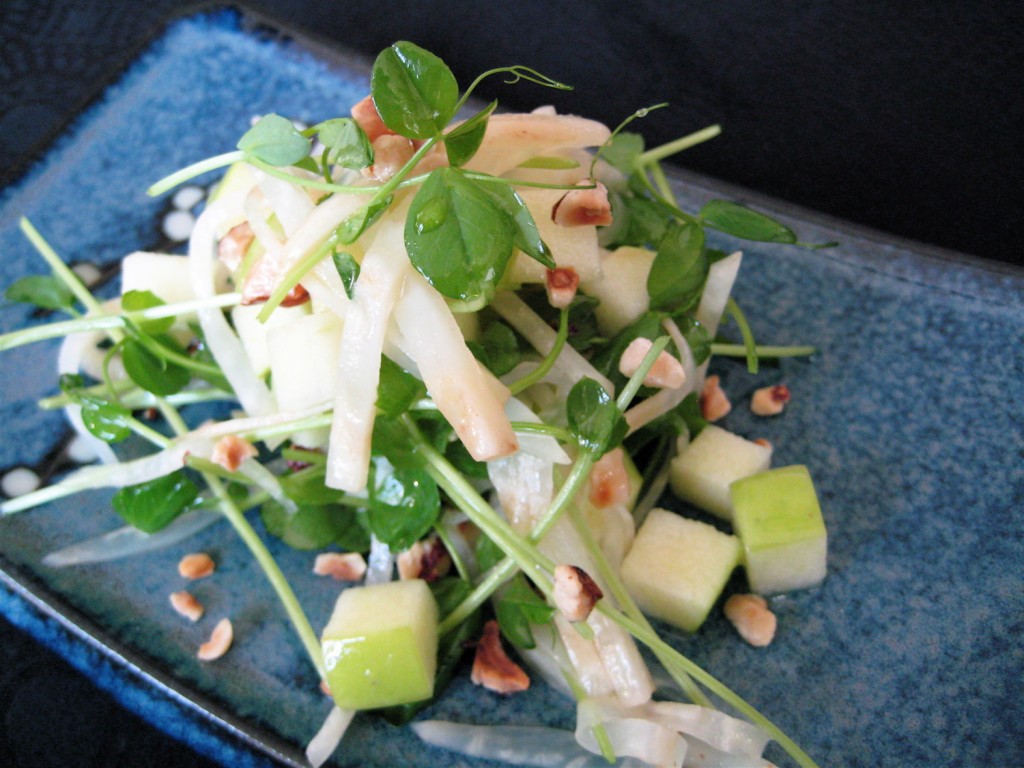 Grab a few extra apples at the farmers' market this week, and try this salad I posted in the early spring. Pea shoots might still be available, but if not, late season salad greens, particularly arugula, would be a great addition. Pea Shoot, Celeriac, Apple and Hazelnut Salad | ||||||||||||||||
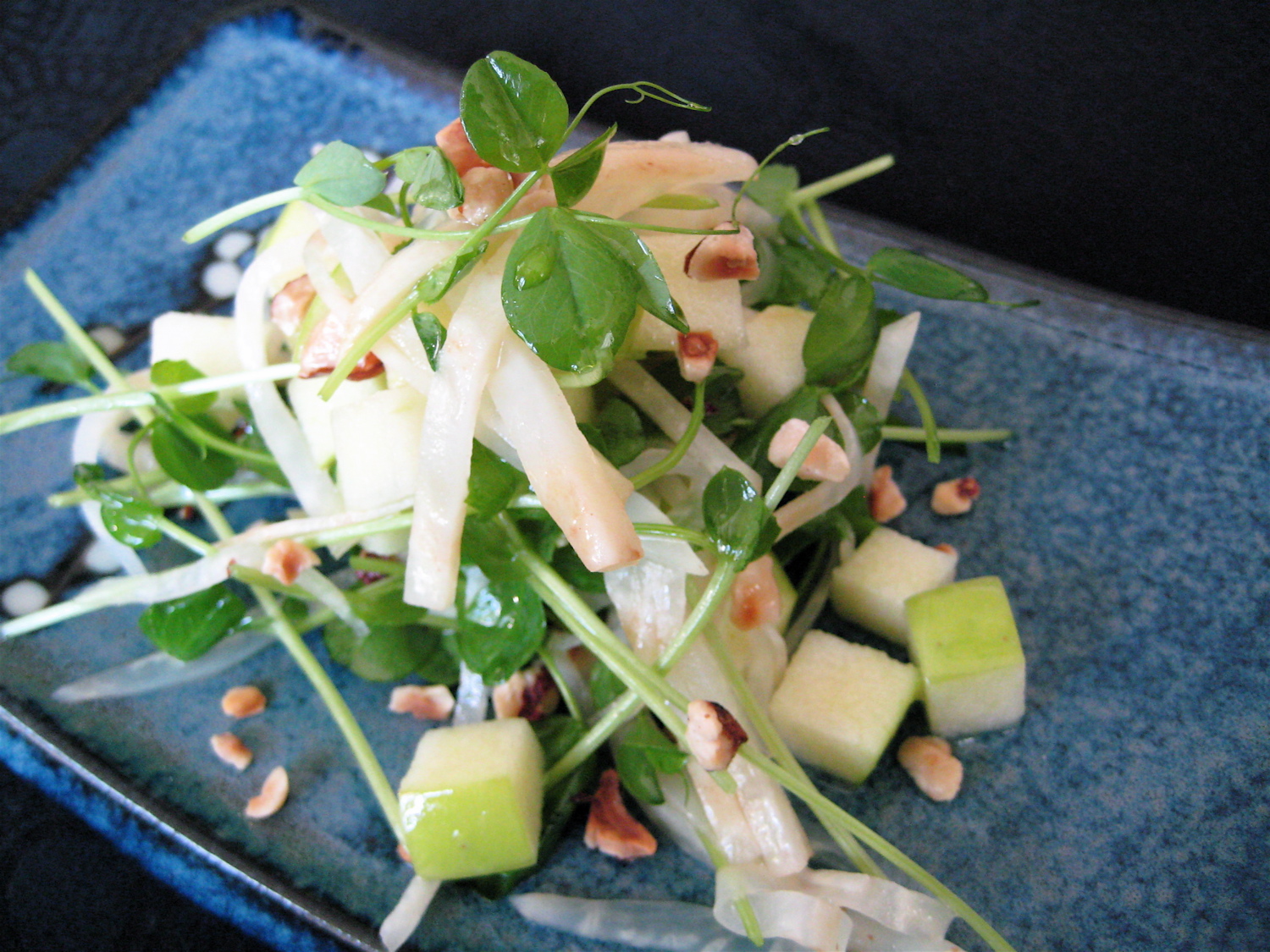 One of the toughest parts of eating almost exclusively locally in Upstate, NY, is the lack of bright, refreshing, crunchy, raw foods and salads in the colder months. We are overflowing in hearty carrot and squash soups, but there are definitely days I would kill for the snap of a thick slice of fresh cucumber. This week, particularly with the few amazing days of spring-promised sunshine we've had, I was already dreaming of getting started on my gardens, and craving some food of much warmer months. I did, however, gather at the farmer's market a collection of ingredients that came together for a great salad. When tested on my husband, the review was-- "Refreshing!". Perfect. 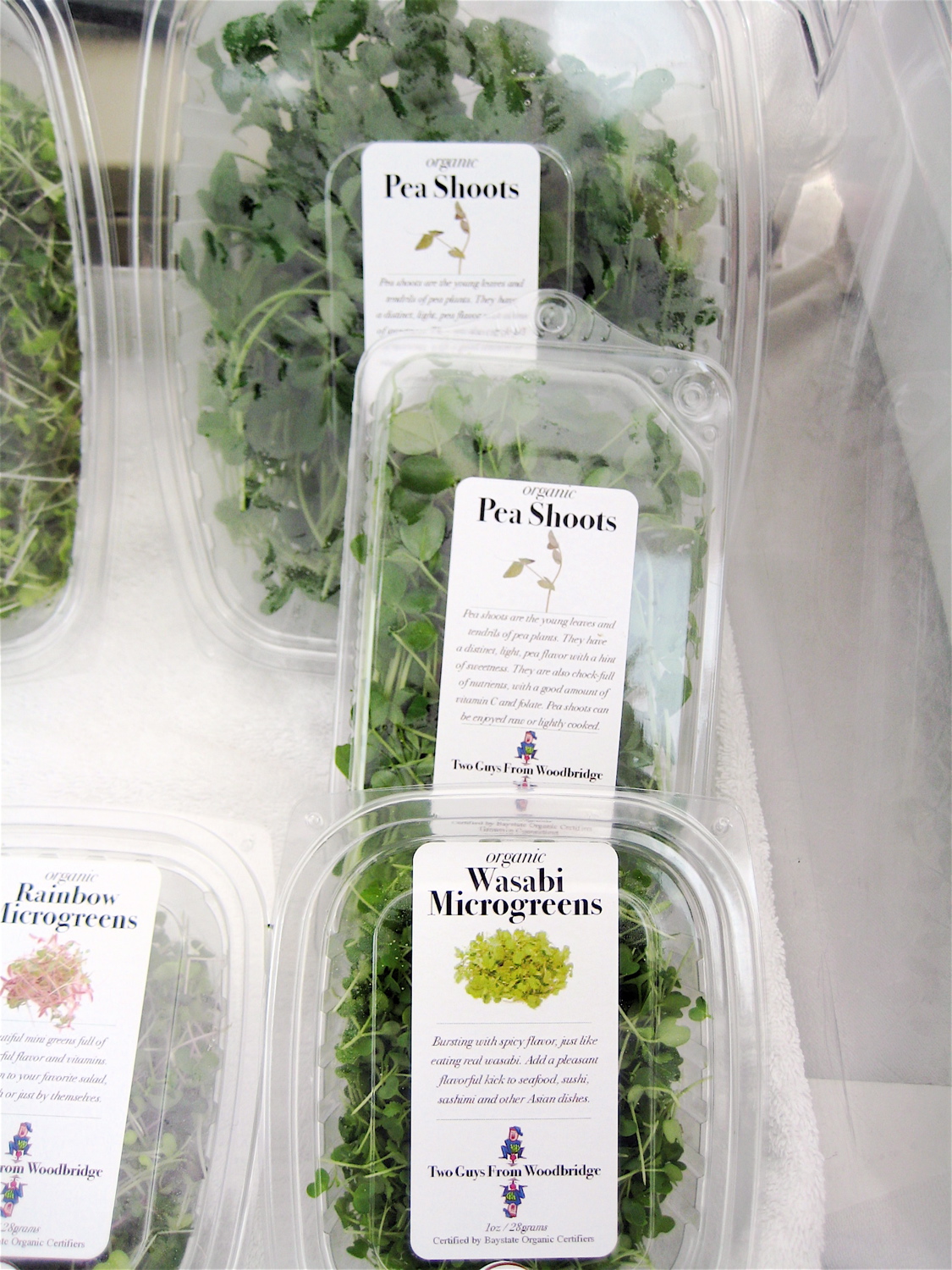 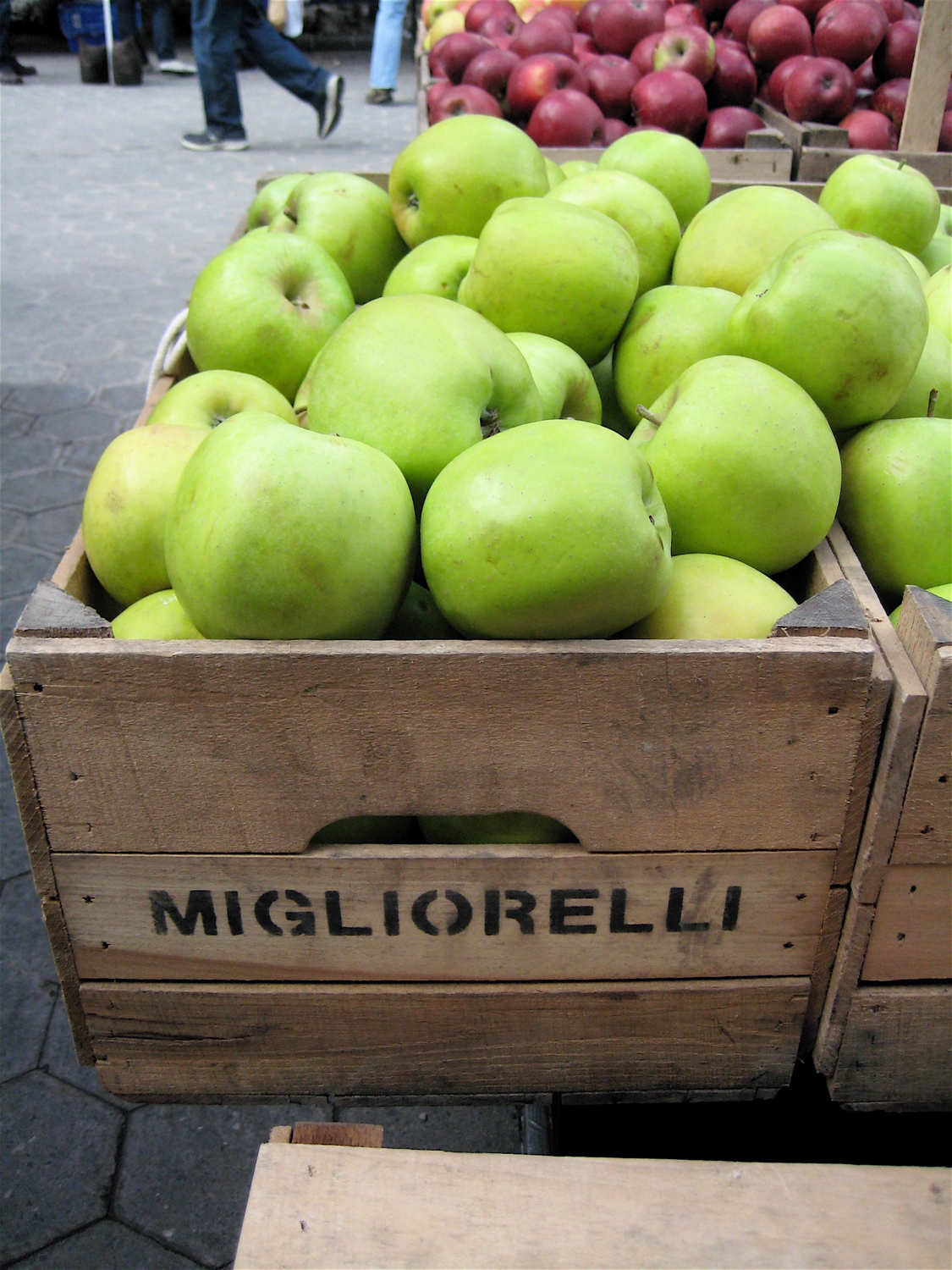 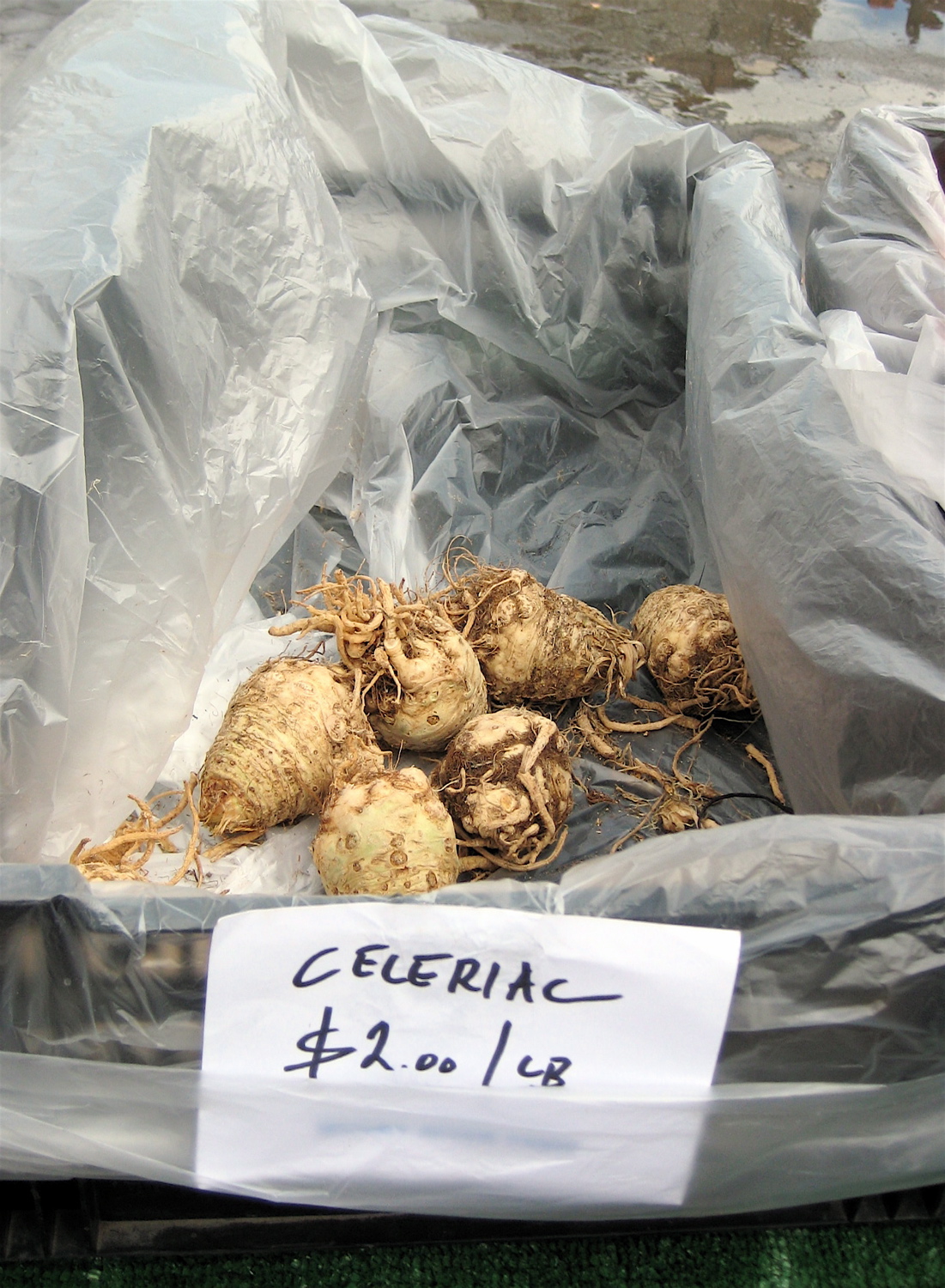 PEA SHOOT, CELERIAC, APPLE AND HAZELNUT SALAD by Catie Serves 4 2 large tart green apples (I used Mutzu apples from Migliorelli Farm) 1 medium celeriac (from Muddy River Farm in Goshen, NY) Medium handful of pea shoots, about 1 oz (from Two Guys from Woodbridge hydroponic farm, in Hamden, CT) 1/4 cup toasted and chopped hazelnuts for the dressing: 1 tsp apple cider vinegar 1 TBS hazelnut oil salt and pepper to taste. Cut the rough exterior off the celeriac, and cut the inner white part into thin matchsticks. Bring a pot of salted water to a boil. Have ready a bowl of ice water. When water is boiling, put in cut celeriac and blanch until al dente, about 30 seconds, depending on the size of the pieces. Immediately scoop out with slotted spoon and shock in ice water. Drain and dry. Cut apples in small cubes. Wash and dry pea shoots. Put cider vinegar in large bowl. Slowly add hazelnut oil in thin stream while whisking constantly. Season with salt and pepper. Add celeriac, apple, pea shoots, and hazelnuts to bowl. Toss with vinaigrette. Gently mound salad on a plate. Sprinkle top with a few more nuts. 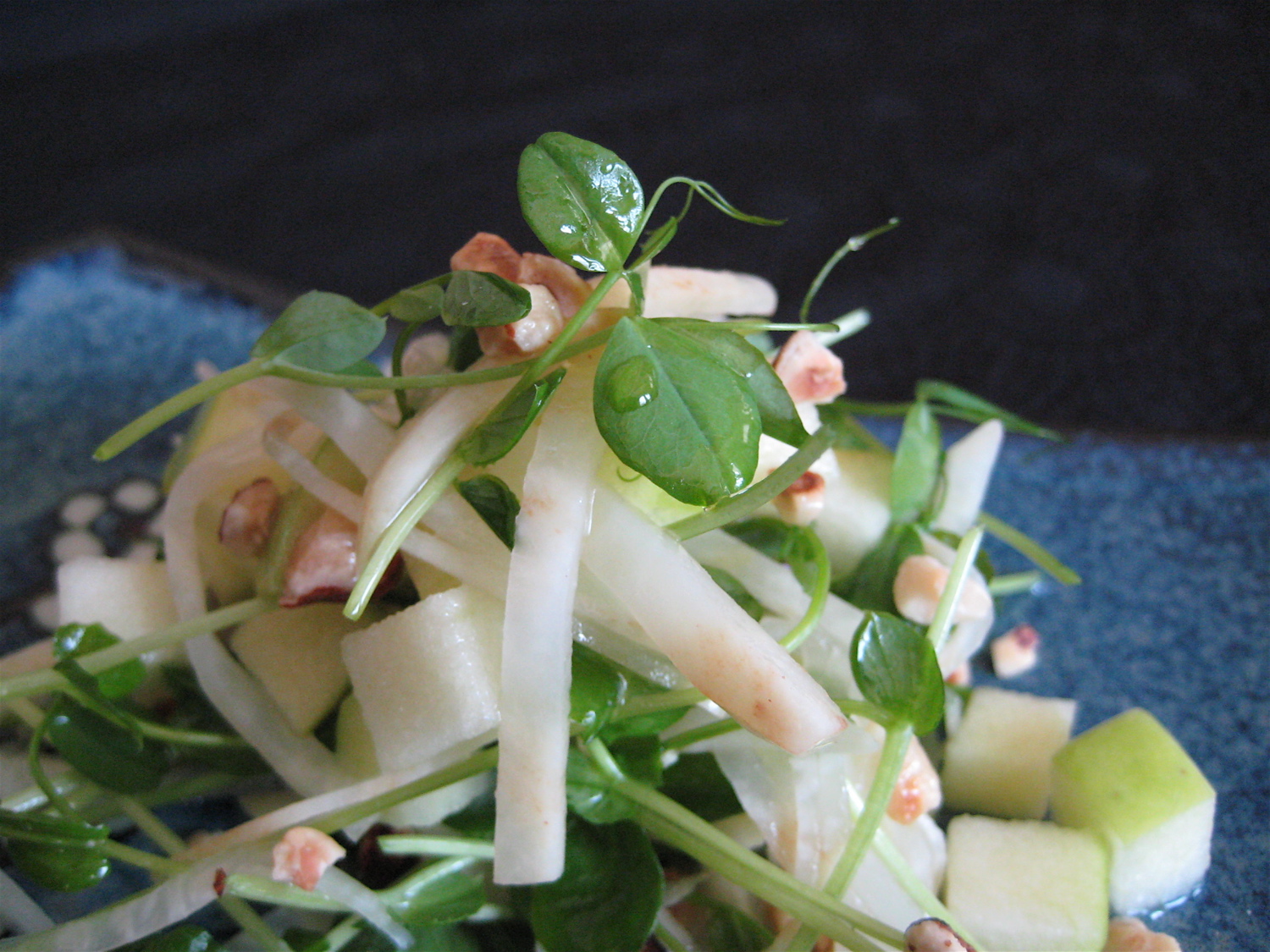 | ||||||||||||||||
|
|
{ welcome! }
 Catie Baumer Schwalb is a chef, food writer and photographer, who splits her life between the city and the country. Not too long ago Catie was a New York City based actress and playwright for more than a decade. She has her Master of Fine Arts from the National Theater Conservatory, and her Grand Diplôme in classic culinary arts from the French Culinary Institute in New York City.
... Read More ≫
Catie Baumer Schwalb is a chef, food writer and photographer, who splits her life between the city and the country. Not too long ago Catie was a New York City based actress and playwright for more than a decade. She has her Master of Fine Arts from the National Theater Conservatory, and her Grand Diplôme in classic culinary arts from the French Culinary Institute in New York City.
... Read More ≫{ get in touch }
{ what's new }
September 12, 2015
August 19, 2013
August 15, 2013
August 13, 2013
August 1, 2013
{ favorites }
{ archives }
Appetizers / Breads & Pastry / Breakfast / Cakes / Canning / Condiments / Dinner / DIY foods / Drinks / Fall / favorites / Grains / Holidays / Local / Noodles & Pasta / Pies & Tarts / Poultry / Salads / Seafood / Snacks / Soup / Spring / Summer / Sweets / Techniques / Vegetables / Vegetarian / Winter /
{ currently reading }
|




